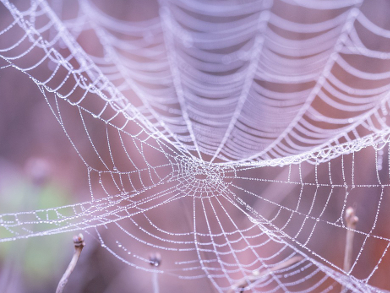Spider silk is known for its elasticity, superior mechanical strength, and biocompatibility. To fabricate synthetic spider silk, recombinant systems producing silk-mimicking proteins are used. These allow the fabrication of silk particles, threads, and films in high yield with the possibility of post-functionalization with, e.g., covalently linked bioactive domains. However, harsh chemicals are used during the process, which often kill the biocompatibility of the functionalized silk.
Wouter van der Wijingaart, KTH Royal Institute of Technology, Stockholm, Sweden, and colleagues have developed a method involving micropatterned superhydrophobic surfaces to structure recombinant spider silk into coatings, nanowires, and sheets without the use of harsh chemicals. The approach is based on soluble functionalized silk proteins interacting with superhydrophobic surfaces that are composed of microarrays of circular silicon pillars. The proteins then self-assemble into silk that retains its functionality and bioactivity.
The team was able to structure functionalized droplets of so-called Z-silk in three different ways. Touching a silk solution droplet to the micropillar array and removing it perpendicular to the surface yielded pillar coatings, moving a droplet sideways along a micropillar array resulted in wires, and evaporating highly concentrated silk droplets on top of the micropillar array generated silk sheets.
- Structuring of Functional Spider Silk Wires, Coatings, and Sheets by Self-Assembly on Superhydrophobic Pillar Surfaces,
Linnea Gustafsson, Ronnie Jansson, My Hedhammar, Wouter van der Wijngaart,
Adv. Mater. 2017.
https://doi.org/10.1002/adma.201704325




